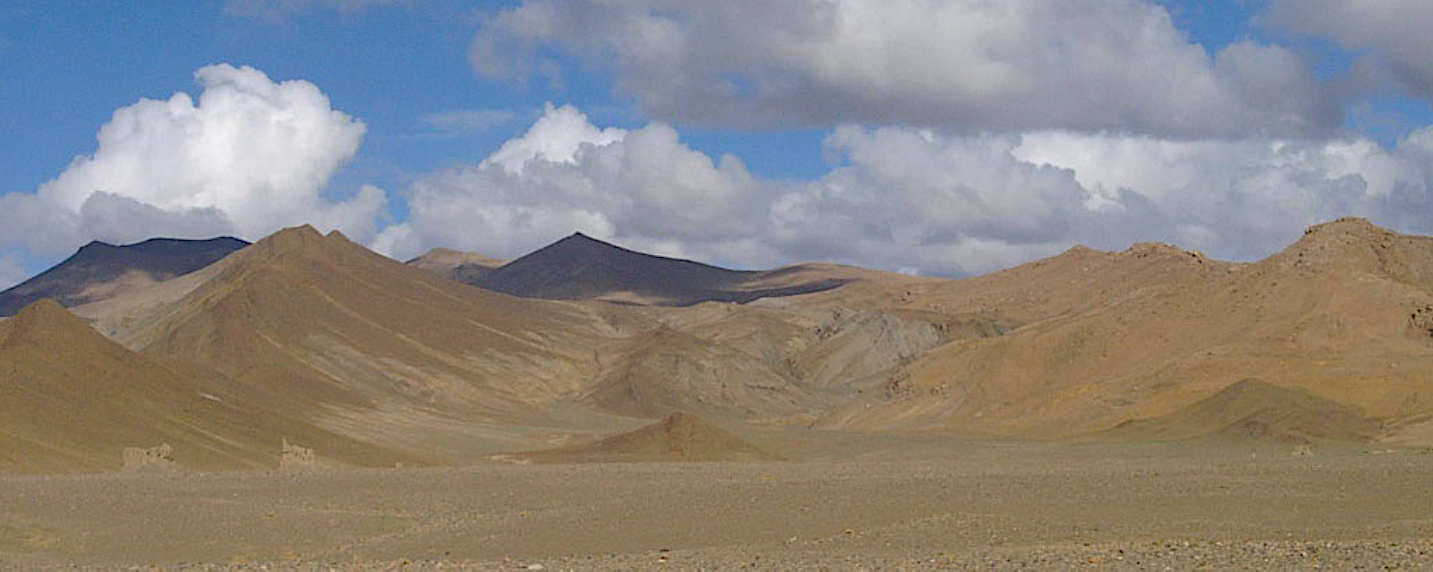Gucuocun Gr
Type Locality and Naming
Himalayan South Belt. The Gucuocun Formation was named by Yu Guangming et al in 1983. The section for the designation cross over the Gucuo and Xiumo villages along the Tingri-Nyalam Highway (86°23′E; 28°42′N). The Gucuocun Formation is named in the Gucuo-Xiumo area of the Nyalam County, Xizang.
Synonym: Gucuocun Fm. Wang Yigang and Zhang Mingliang (1974) created the Gucuo Formation based on the limestone beds above the Upper Jurassic Menkadun Fm. Yu Guangming et al (1983) restudied the sequence, and classified the so-called “Gucuo limestone” to the top of Menkadun Fm. The strata overlying the “Gucuo Formation” were, therefore, grouped as a new formation. The Gucuocun Formation is characterized by a group of siltstone, shale and sandstone, and of latest Jurassic to Early Cretaceous age. Liu Guifang and Wang Sien (1987) measured the Gucuocun Formation and divided it into 5 formations as Gucuo 1 to 5. Again in 2000, the authors give new name to the 5 formations as the Gucuobingzhan Fm (late Tithonian; Gucobingzhan Fm in spelling in Jurassic lexicon entry)), Manquhe Fm (Berriasian), Pandingsi Fm (Valanginian-Hauterivian), Rigana Fm (Barremian) and Gongbamana Fm (Aptian) formations in ascending order. Lithologically and biostratigraphically, the Rigana Fm and Gongbamana Fm can be correlated respectively with the Gambadongshan Fm and Chaqiela Fm in the Gamba-Tingri area (see items of those two formations). Logically, we use both the Gambadongshan Fm and Chaqiela Fm to present the strata in one stratigraphic region. According to the nomenclature principle, the present lexicon remains the terminology of the Gucuocun Formation to represent the strata including the “Gucuobingzhan, Manquhe and Pandingsi formations”.
[Figure: Type section of Gucuocun Formation near Gucuo Village, Nyalam of Tibet]
Lithology and Thickness
The formation is dominated by dark grey arkosic sandstone and greywacke intercalated with dark shales, yielding bivalves and ammonites.
[Figure: Jurassic-Cretaceous boundary in lower part of Gucuocun Formation near Gucuo Village, Nyalam of Tibet]
Relationships and Distribution
Lower contact
In the Nyalam area, the Gucuocun Group overlies conformably on greenish white think bedded quartz sandstone of the Menkadun Fm.
Upper contact
Its top is covered by Quaternary sediments in Nyalam, while in Gamba the top is contacted conformably by the Gambadongshan Fm of a group of black shales containing tubercular siderites and ammonites.
Regional extent
It wide spread in the Gamba and Yadong Counties.
GeoJSON
Fossils
The Gucuocun Formation yields ammonites Berriasella cf. berthei, Neocomites sp., Thurmanniceras jenkinsi; and bivalves Neilo elongata, Mesosaccella simplix, Nuculana (Praesaccella) ovata, Grammatodon (Lamellelodon) gucuoensis, G. (L.) ingenitis, Entolium protentum, E. altilis, Pseudolimea globata, P. gaultina, Astarte elongata, etc.
Age
Depositional setting
Additional Information

